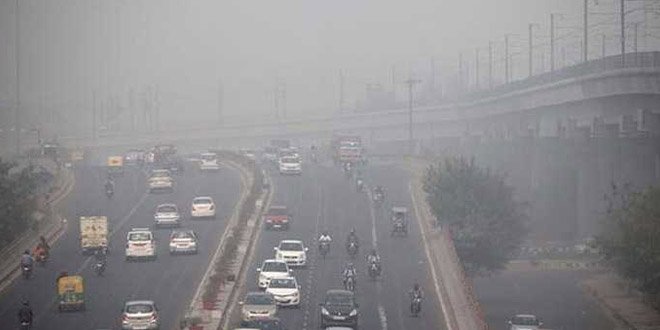Air pollution may account for 1 in 7 new diabetes cases

Air pollution could be responsible for 3.2 million new cases of type 2 diabetes every year globally, suggests a new analysis.
"We estimate that about 14 percent of diabetes in the world occurs because of higher levels of air pollution, that's one in seven cases," said senior study author Dr. Ziyad Al-Aly of Washington University and the VA Saint Louis Health Care System in Missouri.
"Risks exist at levels that are below what's now currently considered safe by the Environmental Protection Agency (EPA) in the United States and also by the World Health Organization," he told Reuters Health in a phone interview.
The tiniest form of particulate matter pollution, known as PM 2.5, is already associated with increased risk of heart disease, lung disease, kidney disease, and other noncommunicable diseases "and contributed to about 4.2 million premature deaths in 2015," the study team writes in The Lancet Planetary Health.
PM 2.5 is the mix of solid fragments and liquid droplets suspended in air that's sometimes visible to human eyes as haze.
"There is emerging evidence over the past several years that particulates, when they are small enough, they make their way through the lungs to the blood vessels," Al-Aly said. "They go to the liver, they go to the pancreas, they go to the kidneys. These particles are noxious. They irritate tissue and they damage tissue, they create oxidative stress, they create inflammation."
Type 2 diabetes is associated with obesity and aging and occurs when the pancreas can't make or process enough of the hormone insulin.
To look for a link between air pollution and type 2 diabetes, researchers analyzed data on 1.7 million U.S. veterans without diabetes, comparing PM 2.5 levels where they lived to their risk of being newly diagnosed with the disease during the next eight and a half years, on average. The researchers separated out the independent effect of air pollution by taking other diabetes risk factors, like obesity, into account.
Veterans' annual average daily PM 2.5 exposure ranged from 5 to 22.1 micrograms per cubic meter (mcg/m3) of air. A 10-point increase in PM 2.5 concentration was associated with a 15 percent higher risk of developing diabetes, and an 8 percent higher risk of death. Risk of diabetes started to rise when pollution levels exceeded 2.4 mcg/m3, well below the EPA's current standard of 12 mcg/m3 and the World Health Organization guideline of 10 mcg/m3.
Al-Aly and his colleagues then looked at worldwide PM 2.5 levels to estimate the total burden of diabetes due to air pollution. About 3.2 million new cases of diabetes, 8.2 million years of life lost to disability and more than 200,000 deaths annually were attributable to breathing dirty air, the authors calculated. Low-income and low-to-middle income countries bore the largest burden of air pollution-related diabetes.
While air in the U.S. is relatively clean compared to smog-choked parts of China, India and elsewhere, Al-Aly said, "we need to do better."
He called for moving to "energy sources that contribute much less to pollution, more electric cars, more hybrid cars, more solar power and wind sources of energy rather than coal. It's already happening, but probably not fast enough."
In an editorial, Dr. Gary O'Donovan of the Universidad de los Andes in Bogota, Colombia, and Dr. Carlos Cadena-Gaitan of the Universidad EAFIT in Medellin, call the findings "another call for action." They note that the current study did not adjust for physical activity, and that it's possible to cut air pollution while promoting exercise with programs like Bogota's Cyclovia, in which city roads are closed to motor vehicles on Sundays and holidays to make room for walkers and cyclists.
"More research is required to determine the independent associations of physical activity and air pollution with diabetes and other non-communicable diseases; nonetheless, there is more than enough evidence to justify the implementation of policies and interventions that might actually increase physical activity and decrease air pollution, such as Cyclovias, free sport and exercise facilities, bicycle sharing schemes, electric vehicles, low sulfur fuels, exhaust filters, and driving prohibition schemes," they write.
Nouvelles connexes


